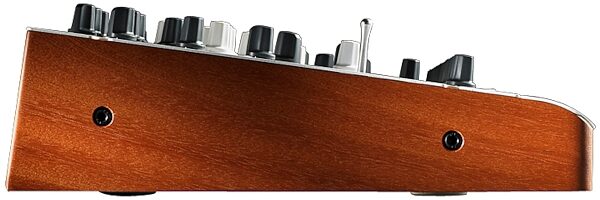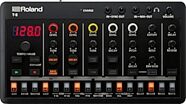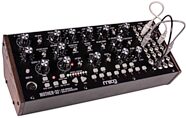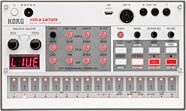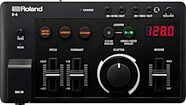Arturia Origin Virtual Modular Synthesizer
No longer available at zZounds
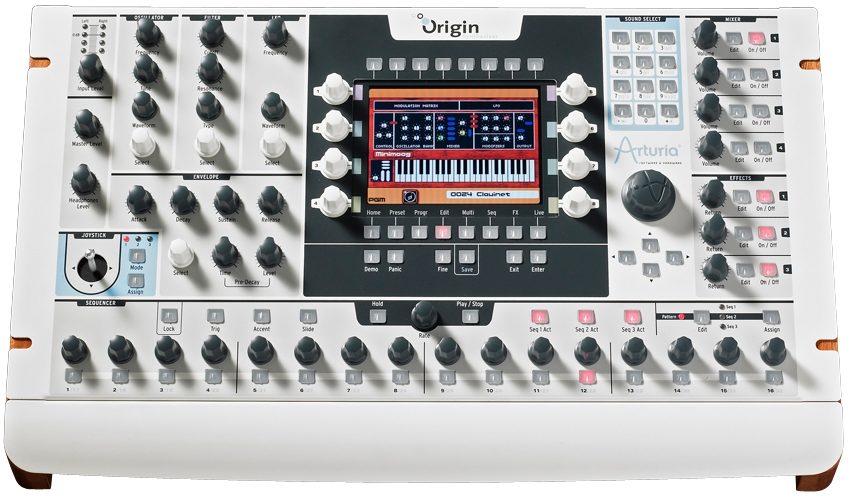


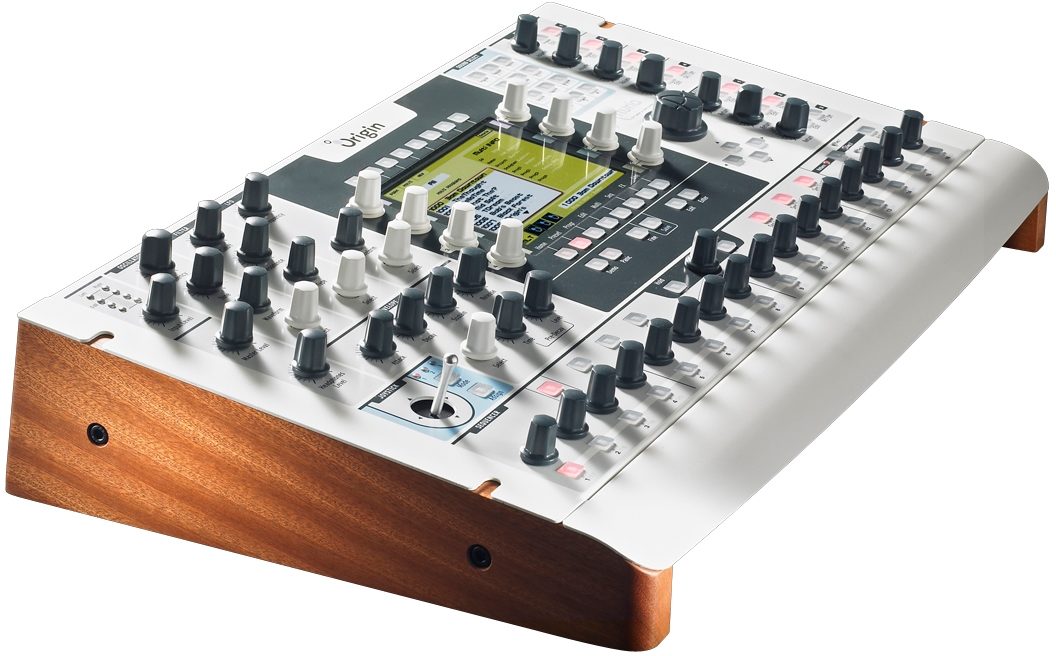

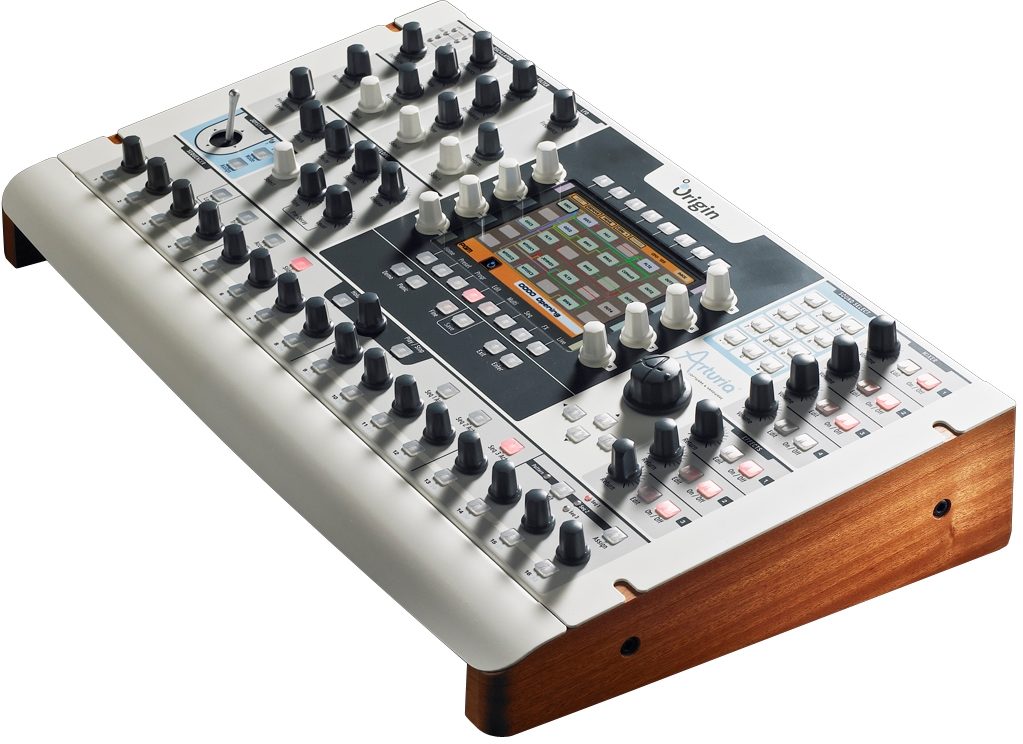

Modules include; Moog Modular, Yamaha CS-80, the Roland Jupiter-8 and others. Go far beyond what a "normal" synthesizer can do.
Overview
Get Arturia's Origin Synthesizer and get the most powerful synthesizer on the market. The Origin goes much further than you've ever seen a synth go. It surpasses the traditional definition of synthesizers. It is a hardware DSP system that houses several synthesizers in one machine. Some of these synths come from the past, such as the Minimoog, some are totally new and innovative.
Loaded with modules extracted from the best synthesizers of all time, Origin lets you combine these modules and take advantage of the additional possibilities put onboard. The result: a new type of sound accessible through an extremely intuitive interface.
Features
- Create your own synthesis patch by connecting independent modules
- Modules include; Moog Modular, Yamaha CS-80, the Roland Jupiter-8 and others
Superb audio quality with TAE engine in a hardware chassis (24 bits/44.1 kHz)
- High-Quality Real time Effects: Phaser, Chorus, Delay, Reverb, Distortion, EQ and Bit Crusher
- 500 presets created by a selection of international sound designers
- 16/32 step advanced sequencer, program three sub-sequences at a time even live!
- Multi mode allows you to play 4 instruments at a time
- Creative Macros, advanced LFO's, innovative modulation sources and variable Joystick modes
- Advanced Preset browser
- Analog Audio Connectivity: 2 audio ins, 10 audio outs
- Digital Audio: SPDIF out, USB 2.0
- Built-in expression pedal and footswitch control inputs
- MIDI: In, Out, Thru or USB 2
- Up to… read more 32 voices of polyphony
- Also a MIDI controller offering 33 encoders, 21 potentiometers and 1 joystick
- Ergonomic hardware design and quality manufacturing in France and Germany
- Connect to a Mac/PC to Archive presets, exchange data and upgrade firmware
- 160 pages manual in English read less
Loaded with modules extracted from the best synthesizers of all time, Origin lets you combine these modules and take advantage of the additional possibilities put onboard. The result: a new type of sound accessible through an extremely intuitive interface.
Features
- Create your own synthesis patch by connecting independent modules
- Modules include; Moog Modular, Yamaha CS-80, the Roland Jupiter-8 and others
Superb audio quality with TAE engine in a hardware chassis (24 bits/44.1 kHz)
- High-Quality Real time Effects: Phaser, Chorus, Delay, Reverb, Distortion, EQ and Bit Crusher
- 500 presets created by a selection of international sound designers
- 16/32 step advanced sequencer, program three sub-sequences at a time even live!
- Multi mode allows you to play 4 instruments at a time
- Creative Macros, advanced LFO's, innovative modulation sources and variable Joystick modes
- Advanced Preset browser
- Analog Audio Connectivity: 2 audio ins, 10 audio outs
- Digital Audio: SPDIF out, USB 2.0
- Built-in expression pedal and footswitch control inputs
- MIDI: In, Out, Thru or USB 2
- Up to… read more 32 voices of polyphony
- Also a MIDI controller offering 33 encoders, 21 potentiometers and 1 joystick
- Ergonomic hardware design and quality manufacturing in France and Germany
- Connect to a Mac/PC to Archive presets, exchange data and upgrade firmware
- 160 pages manual in English read less
Specs
Specifications
Operating sampling frequency: 44.1 kHz
Modes: Program / Multi
Sound generation system: TAE
Polyphony: 32 voices
Synth (modular structure):
- Up to 9 oscillators (emulations from Minimoog, ARP 2600, CS-80, JP8, ProV)
- Up to 4 wavetables oscillators
- Up to 4 filters (switchable multimode filters including analog emulations
- 1, 2 & 4-poles LP, HP, BP and Notch modes
- Up to 4 output VCAs
- Up to 5 mixers (5 Minimixer and 1 Joystick mixer)
- 1 RingMod
- 2 faders
- 1 BodShifter
- Up to 4 poly LFO and 2 mono LFO mono
- Up to 8 ADSR Envelopes modules
- 1 Galaxy module
- 1 2D envelope
Minimoog template:
- Up to 3 oscillators; one 4-poles LP resonant filter, one mixer
- 2 envelopes; one LFO and one modulation matrix
Effects: 5 including: chorus, delay, reverb, distortion, dual phaser
Effects Structure: 3 effect slots per Program with serial and parallel structures
Step sequencer:
- Structure: Three 32 steps free assignable sub-sequences
- Play modes: One shot, loop (forward, backward; forward and backward)
Arpeggiator modes: Forward, backward, forward and backward, random
Programs: 1000 programs (400 Factory and 600 User Programs)
Program structure:
- 1 synth modular or template structure
- 3 effect slots, 1 sequence
Multi: 256 (100 Factory and 156 User multis)
Multi structure/modes: Up to 4 Programs slots with Layering, split and MIDI
Controllers: 21 potentiometers, 33 encoders, 1 joystick
Audio inputs: Two 1/4 inch jacks
Audio outputs:
- 1 headphone output: 1/4 inch stereo jack
- 2 main audio outputs: 1/4 inch balanced jacks
- 8 individual auxiliary outputs: 1/4 inch balanced jacks
Control inputs: 1/4 inch balanced jacks
- 1 foot controller
- 1 footswitch controller
MIDI: IN, OUT, THRU connectors, USB 2 connector
Main screen: 320 x 236 pixels LCD with 32,768 colors
Power supply: 6.5VDC 3.85A
Dimensions (WxDxH): 19 x 11.4 x 3.4 inches (482 x 290 x 87 mm)
Weight: 17.6 lbs (8 kg)
System Requirements
Required Operating System:
- Windows: Windows XP/Vista
- Mac OS X: Mac OS X 10.3.9 or higher and Universal Binary
Required configuration:
- PC/Windows: 512 MB RAM; 1,5 GHz CPU
- Mac OS X : 512 MB RAM; 1,5 GHz CPU
General Requirements: USB port required
Operating sampling frequency: 44.1 kHz
Modes: Program / Multi
Sound generation system: TAE
Polyphony: 32 voices
Synth (modular structure):
- Up to 9 oscillators (emulations from Minimoog, ARP 2600, CS-80, JP8, ProV)
- Up to 4 wavetables oscillators
- Up to 4 filters (switchable multimode filters including analog emulations
- 1, 2 & 4-poles LP, HP, BP and Notch modes
- Up to 4 output VCAs
- Up to 5 mixers (5 Minimixer and 1 Joystick mixer)
- 1 RingMod
- 2 faders
- 1 BodShifter
- Up to 4 poly LFO and 2 mono LFO mono
- Up to 8 ADSR Envelopes modules
- 1 Galaxy module
- 1 2D envelope
Minimoog template:
- Up to 3 oscillators; one 4-poles LP resonant filter, one mixer
- 2 envelopes; one LFO and one modulation matrix
Effects: 5 including: chorus, delay, reverb, distortion, dual phaser
Effects Structure: 3 effect slots per Program with serial and parallel structures
Step sequencer:
- Structure: Three 32 steps free assignable sub-sequences
- Play modes: One shot, loop (forward, backward; forward and backward)
Arpeggiator modes: Forward, backward, forward and backward, random
Programs: 1000 programs (400 Factory and 600 User Programs)
Program structure:
- 1 synth modular or template structure
- 3 effect slots, 1 sequence
Multi: 256 (100 Factory and 156 User multis)
Multi structure/modes: Up to 4 Programs slots with Layering, split and MIDI
Controllers: 21 potentiometers, 33 encoders, 1 joystick
Audio inputs: Two 1/4 inch jacks
Audio outputs:
- 1 headphone output: 1/4 inch stereo jack
- 2 main audio outputs: 1/4 inch balanced jacks
- 8 individual auxiliary outputs: 1/4 inch balanced jacks
Control inputs: 1/4 inch balanced jacks
- 1 foot controller
- 1 footswitch controller
MIDI: IN, OUT, THRU connectors, USB 2 connector
Main screen: 320 x 236 pixels LCD with 32,768 colors
Power supply: 6.5VDC 3.85A
Dimensions (WxDxH): 19 x 11.4 x 3.4 inches (482 x 290 x 87 mm)
Weight: 17.6 lbs (8 kg)
System Requirements
Required Operating System:
- Windows: Windows XP/Vista
- Mac OS X: Mac OS X 10.3.9 or higher and Universal Binary
Required configuration:
- PC/Windows: 512 MB RAM; 1,5 GHz CPU
- Mac OS X : 512 MB RAM; 1,5 GHz CPU
General Requirements: USB port required
Documents and Manuals
For support or warranty questions, please contact the manufacturer:
Web: https://www.arturia.com/support
Web: https://www.arturia.com/support
Reviews
Reviewers gave this product an overall rating of 5 out of 5 stars.
(3 ratings)
Submitted April 24, 2010 by a customer from hotmail.com
"The VA to end all VAs? Could be!"
Verified Customer
zZounds has verified that this reviewer made a purchase from us.
This review has been selected by our experts as particularly helpful.
Sound
After creating some amazing sounding softsynths, Arturia decided to make a zero latency hardware unit. And they made it something of the ultimate synth by taking oscillators, filters and other elements of these killer vintage instruments and letting you mix and match them as you please. There are limits, as these are pretty juicy analog-sounding building blocks, and the limit seems to be 20 units. But keep in mind that a Jupiter 8 is made of nine or ten units, so you can make some huge sounding synthesizers. Arturia even provides more basic Origin oscillators and filters which are easier on the CPU and ram. The sound is something else, like a Moog Modular patched into a CS80 and a Jupiter! To take the sound power even further, they included the digital wavetables of the Prophet VS, and in the latest O.S. update, there is even a drawbar organ model and a leslie effect. And the organ can be run though the filters and other elements just like any other oscillator. Does this thing have features. As you can see, the unit has dozens of knobs and buttons, meaning fewer menus to plow through, and immediate tweakablilty when programming or playing. Eight knobs along the screen even give you access to a range of parameters of your choosing, to give you quick and easy control over your patch while you play. The small color screen is quite legible, and shows you a lot of useful info at once. Because this is a modular approach, you get… read more to decide how you want to modulate and control the thing, making this as expressive as any rompler workstation. You get three effects at once for each patch, based on simpler stomp boxes over Eventide rack units, so distortion is going to be more like an Electro=Harmonix than a SansAmp or Pod Pro, but it's still quite useful for dirtying up a lead or organ. And even for a basic reverb, it sounds very nice. The bonus is that the effects are run separately from the synth section, so you don't have to sacrifice any synth modules for your distortion-leslie-reverb effect. And the sequencer and arpeggiator is its own unit as well, with three 32 step sequences controlled by its own row of knobs, so techno-trance-ambient-new age-whatever textures are just a few button presses away. And who hasn't wanted to try being Jean Michel Jarre or Tangerine Dream at one point or other? The unit is loaded with hundreds of patches, so you have plenty to play with and enjoy if you don't want to get your hands dirty creating instruments. Along with all the instruments created by the sound designers, there's a template for a Minimoog, if you want something basic and immediate, but with the extra parameters of the Origin synth engine to hot rod the thing. More templates, such as a CS80 and Jupiter 8 are coming this summer. Many patches are taken from classic keyboardists and their trademark sounds, like Keith Emerson, Eddie Jobson, Rick Wakeman and Tony Banks. Traditional analog sounds are there by the boatload, but there are some things which go way beyond what you find on a typical synth, like the Galaxy modulator, and the rare Bode Frequency Shifter from the Moog Modular III. So if you want ARP 2600 leads or outer space bloops and twitters, this thing has you covered. On that note, the Multis are just amazing with all the things going on, layering up to four of these patches, each with their own effects and sequences. Because the Origin is doing hundreds of things at once, Multis are usually limited to a few notes, and with really busy patches, just two, but then big chords would just turn them into a mess of sound anyway, and you want to hear what's going on as you hold a note. And remember, this means not just four multi-oscillator patches, but up to 12 effects and 12 sequences all running at once! It's not Karma, but it's darn close. And while the manual states that a synth patch has up to 32 note polyphony, it's usually quite a bit less than that. But then, modular synths rarely let you play more than one note, and if you have a rare one, two. Besides, how many notes could a Jupiter or an OB-X play? Most likely, you have a rompler anyhow, and you're buying one of these to get "THAT SOUND" which only an analog will provide, and these TAE oscillators and filters are about as close as you can get. If that wasn't enough, you get eight individual outputs normally set up as four stereo pairs, as well as a SPDIF out. And you get audio in, which you can use as an oscillator source and/or to send into the effects. So if you want to plug your synth into it and mingle it with all this modular power, or a guitar or voice, you can do it. And for heaven's sake, when an update becomes available, get it! The latest update at the Arturia site gives you the organ and leslie models, as well as some nice performance and stability enhancement. And as I say, this summer there are more goodies coming, like the CS80 and Jupiter 8 templates, and more with time. As for support, there are Arturia people here in the US as well as Europe, and the site has a message board where you can expect quick responses to questions or issues. Along with that, there are additional patches put up by sound designers, as well as a section for your own patches you might want to share. It's empty now, but I might just have to get the ball rolling on that... Heck, I want to get back to the music room and dig into this thing, but I wanted to let you know that if you want an instrument which will give you a little something extra that no other synth will, look no further. You found it. The only thing better are the soft synths themselves, and there, you have to come up with a PC and sound card with no latency, and good luck on that!
Musical Background:
Hobbyist
Musical Style:
Rock, progressive rock read less
After creating some amazing sounding softsynths, Arturia decided to make a zero latency hardware unit. And they made it something of the ultimate synth by taking oscillators, filters and other elements of these killer vintage instruments and letting you mix and match them as you please. There are limits, as these are pretty juicy analog-sounding building blocks, and the limit seems to be 20 units. But keep in mind that a Jupiter 8 is made of nine or ten units, so you can make some huge sounding synthesizers. Arturia even provides more basic Origin oscillators and filters which are easier on the CPU and ram. The sound is something else, like a Moog Modular patched into a CS80 and a Jupiter! To take the sound power even further, they included the digital wavetables of the Prophet VS, and in the latest O.S. update, there is even a drawbar organ model and a leslie effect. And the organ can be run though the filters and other elements just like any other oscillator. Does this thing have features. As you can see, the unit has dozens of knobs and buttons, meaning fewer menus to plow through, and immediate tweakablilty when programming or playing. Eight knobs along the screen even give you access to a range of parameters of your choosing, to give you quick and easy control over your patch while you play. The small color screen is quite legible, and shows you a lot of useful info at once. Because this is a modular approach, you get… read more to decide how you want to modulate and control the thing, making this as expressive as any rompler workstation. You get three effects at once for each patch, based on simpler stomp boxes over Eventide rack units, so distortion is going to be more like an Electro=Harmonix than a SansAmp or Pod Pro, but it's still quite useful for dirtying up a lead or organ. And even for a basic reverb, it sounds very nice. The bonus is that the effects are run separately from the synth section, so you don't have to sacrifice any synth modules for your distortion-leslie-reverb effect. And the sequencer and arpeggiator is its own unit as well, with three 32 step sequences controlled by its own row of knobs, so techno-trance-ambient-new age-whatever textures are just a few button presses away. And who hasn't wanted to try being Jean Michel Jarre or Tangerine Dream at one point or other? The unit is loaded with hundreds of patches, so you have plenty to play with and enjoy if you don't want to get your hands dirty creating instruments. Along with all the instruments created by the sound designers, there's a template for a Minimoog, if you want something basic and immediate, but with the extra parameters of the Origin synth engine to hot rod the thing. More templates, such as a CS80 and Jupiter 8 are coming this summer. Many patches are taken from classic keyboardists and their trademark sounds, like Keith Emerson, Eddie Jobson, Rick Wakeman and Tony Banks. Traditional analog sounds are there by the boatload, but there are some things which go way beyond what you find on a typical synth, like the Galaxy modulator, and the rare Bode Frequency Shifter from the Moog Modular III. So if you want ARP 2600 leads or outer space bloops and twitters, this thing has you covered. On that note, the Multis are just amazing with all the things going on, layering up to four of these patches, each with their own effects and sequences. Because the Origin is doing hundreds of things at once, Multis are usually limited to a few notes, and with really busy patches, just two, but then big chords would just turn them into a mess of sound anyway, and you want to hear what's going on as you hold a note. And remember, this means not just four multi-oscillator patches, but up to 12 effects and 12 sequences all running at once! It's not Karma, but it's darn close. And while the manual states that a synth patch has up to 32 note polyphony, it's usually quite a bit less than that. But then, modular synths rarely let you play more than one note, and if you have a rare one, two. Besides, how many notes could a Jupiter or an OB-X play? Most likely, you have a rompler anyhow, and you're buying one of these to get "THAT SOUND" which only an analog will provide, and these TAE oscillators and filters are about as close as you can get. If that wasn't enough, you get eight individual outputs normally set up as four stereo pairs, as well as a SPDIF out. And you get audio in, which you can use as an oscillator source and/or to send into the effects. So if you want to plug your synth into it and mingle it with all this modular power, or a guitar or voice, you can do it. And for heaven's sake, when an update becomes available, get it! The latest update at the Arturia site gives you the organ and leslie models, as well as some nice performance and stability enhancement. And as I say, this summer there are more goodies coming, like the CS80 and Jupiter 8 templates, and more with time. As for support, there are Arturia people here in the US as well as Europe, and the site has a message board where you can expect quick responses to questions or issues. Along with that, there are additional patches put up by sound designers, as well as a section for your own patches you might want to share. It's empty now, but I might just have to get the ball rolling on that... Heck, I want to get back to the music room and dig into this thing, but I wanted to let you know that if you want an instrument which will give you a little something extra that no other synth will, look no further. You found it. The only thing better are the soft synths themselves, and there, you have to come up with a PC and sound card with no latency, and good luck on that!
Musical Background:
Hobbyist
Musical Style:
Rock, progressive rock read less
7 of 7 people (100%) people found this review helpful. Did you?
Thanks for your opinion!
No longer available at zZounds
In most cases, a product is unavailable because it has been discontinued by the manufacturer
This is a carousel with product cards. Use the previous and next buttons to navigate.






